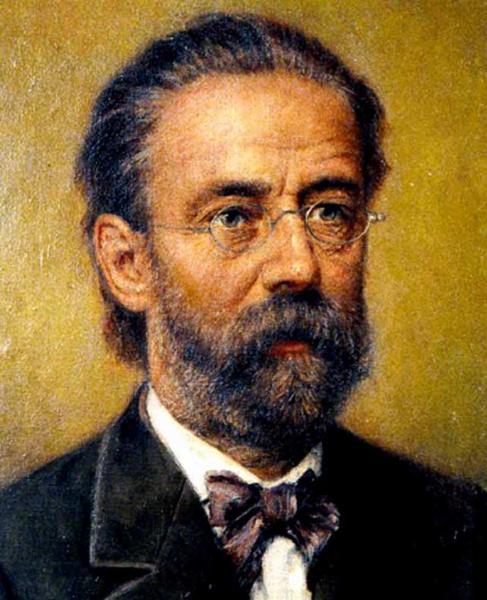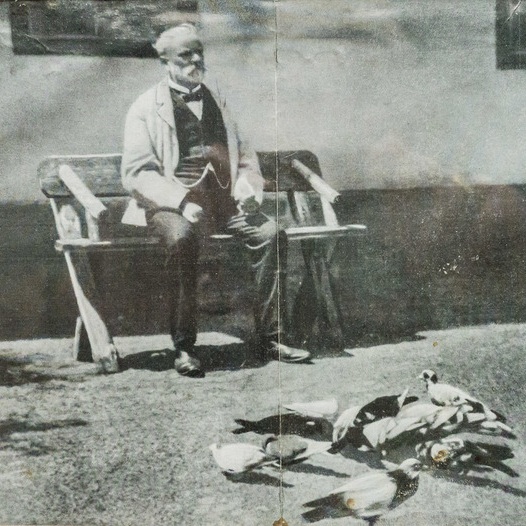by Anthony Martin
The New Esterházy Quartet is one of SFEMS’ most distinguished Affiliate groups. Recently voted “Best Chamber Music Performers” by San Francisco Classical Voice, the quartet is increasingly recognized as one of the world’s top period-instrument string quartets. Founded to present historically-informed interpretations of Joseph Haydn’s path-breaking music (he essentially invented the string quartet as we now know it), they have broadened their focus to embrace much of the Classical and early Romantic repertoire, with occasional forays into later 19th-century music. For their final concert of the 2015–16 season, they will perform quartets by two Czech composers, Bedřich Smetana (Quartet No. 2 in D Minor) and Antonin Dvořák (Quartet No. 11 in C Major, Op. 61), both dating from the early 1880s. In the following notes, New Esterházy’s violist, Anthony Martin, discusses these works and their composers in historical context.

The year 1881 is a year remarkable for its bilateral symmetry, not to be repeated until 8008, although 1961 (to be followed by 6009) offers an upside down and backwards symmetry. NEQ have already three years ago celebrated 1881 in our program The Danube Runs Through It as both the centenary of the publication of Haydn’s Op. 33 Quartets and the birth year of Béla Bartók. Now we have two quartets dating from around that seminal year: Dvořák’s No. 11 in C and Smetana’s No. 2 in D minor.
Although Dvořák’s Quartet is overtly public and Smetana’s intensely private, they both share an awareness of the Czech nationalism that was struggling with Austrian political and cultural hegemony in the latter 19th century. With the Thirty Years’ War in the 17th century, the Habsburg Monarchy extended its control over Bohemia and Moravia and imposed Catholicism and the German language on the Protestant and Czech-speaking populace. The Czech struggle for national independence has taken many twists and turns in the past four centuries, including military occupation by both Nazi Germany and Soviet Russia in the 20th.
The social unrest that swept Europe in 1848 also affected the 24-year-old Bedřich Smetana—in addition to manning barricades, he wrote at that time his first overtly nationalistic music. He seemed to identify strongly with Czech nationalism. His first string quartet, titled From My Life, began as strictly autobiographical, but he later recast the program to favor a broader, more nationalistic interpretation of the events depicted therein. The little-known Second Quartet continues in an autobiographical vein, but it also gives prominence to the importance of Czech national identity in his life.
Contending with the deafness and mental instability of late stage syphilis, Smetana in the last years of his life was under doctor’s orders not to attempt composition. Nevertheless, he completed his Second Quartet and attended—but could not hear—its first performance four months before his death. In letters he revealed its program: Presented in this music is the whirl of music in a man who has lost his sense of hearing. The first movement represents the depression and confusion resulting from deafness, the second and third his further developments in the Czech spirit and his inner joy from creative activity, and the fourth a Beethoven-like victory over his fate. The elliptical nature of the themes and their development clearly points the way to Janáček’s mature style and it is said that Arnold Schoenberg considered Smetana’s Second Quartet to be far ahead of its time.
Born a generation later than Smetana, Antonin Dvořák benefitted from the example of the pioneering work of his predecessor introducing elements of Czech folk music into the idiom of concert music. For both composers this use of their national music had strong political overtones, and criticism of their music was often covert criticism of a perceived political agenda. For centuries the center of concert life had been Vienna, and thus folk elements of Austrian music became part the default musical vernacular to the extent that they are not recognized as ethnic in the same way as say Liszt’s Hungarian Rhapsodies or Dvořák’s Slavonic Dances. It is no coincidence that Vienna was also the political capital of the Habsburg empire.

Whereas the quartet Dvořák wrote just before Op. 61 carries the nickname the Slavonic Quartet, the Quartet in C major was written for Hellmesberger’s Vienna-based ensemble, and so avoids some of the ethnic spices that he used in its immediate predecessor. It is a quartet not to bring the Czech countryside into the center of Habsburg cultural and political power, but rather a demonstration of its composer’s “Classical” heritage, his adherence to the forms and expression of Vienna’s quartet culture. Nevertheless, Slavonic elements gradually assert themselves in the quartet’s later movements.
The two Waltzes that close our program were arranged by Dvořák from his Op. 54. In spite of being Viennese dances, these Waltzes were also celebrations of Czech nationalism. They were written for a ball commemorating the 30th anniversary of a revival of exclusively Czech formal dancing in the capital. The drama of the struggle for an independent Czech nation continues to this day, with the peaceful dissolution of Czechoslovakia taking place less than twenty-five years ago. Both Smetana and Dvořák found ways to blend their individual strivings with the political aspirations of their people, giving their music not only personal expression, but a Czech accent.
The New Esterházy Quartet (Lisa Weiss and Kati Kyme, violin; Anthony Martin, viola; and William Skeen, violoncello) performs music of Dvořák and Smetana 8:00 p.m., Friday, May 27, at the Hillside Club, 2286 Cedar Street (at Arch), Berkeley; 4:00 p.m., Saturday, May 28, at St. Mark’s Lutheran Church, 1111 O’Farrell Street (at Franklin), San Francisco; and 4:00 p.m., Sunday, May 29, 2016, at All Saints’ Episcopal Church, 555 Waverley Street (at Hamilton), Palo Alto. All tickets for this Friday concert are $20, and are sold only at the door. Tickets for Saturday & Sunday are $25, with discounts for seniors and students, and are available by phone at 415-520-0611 or on the web at www.newesterhazy.org












